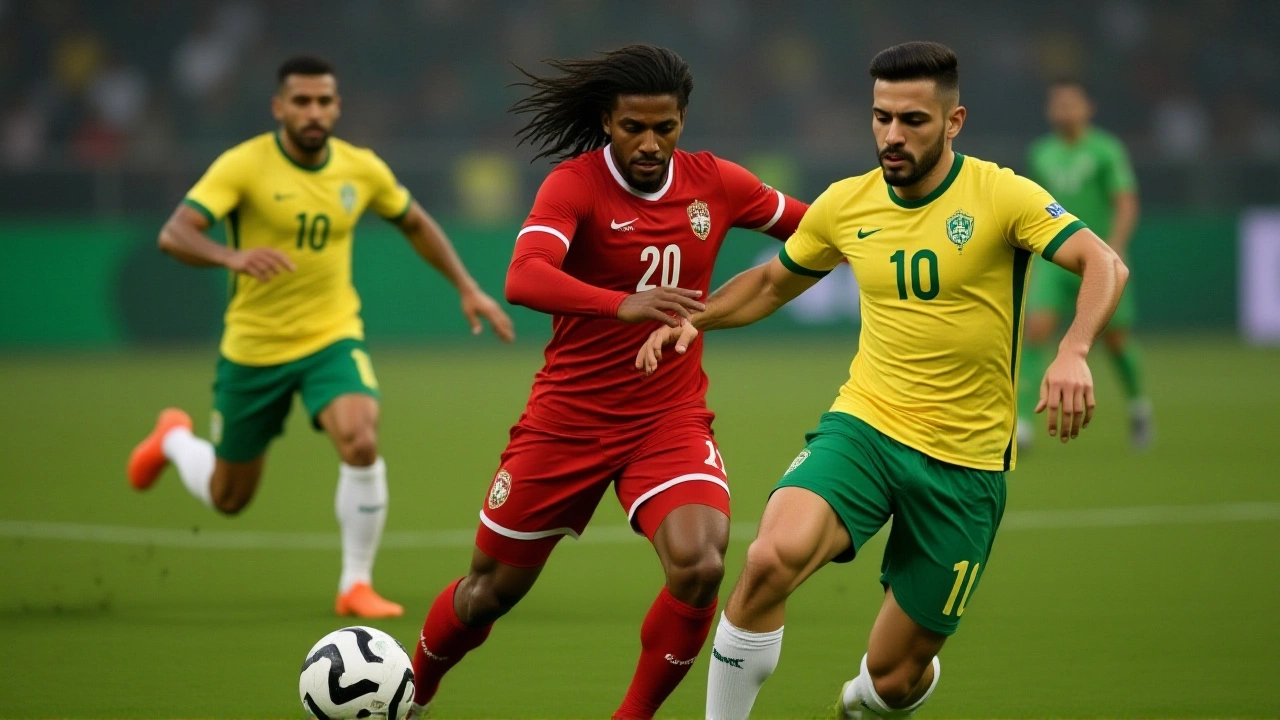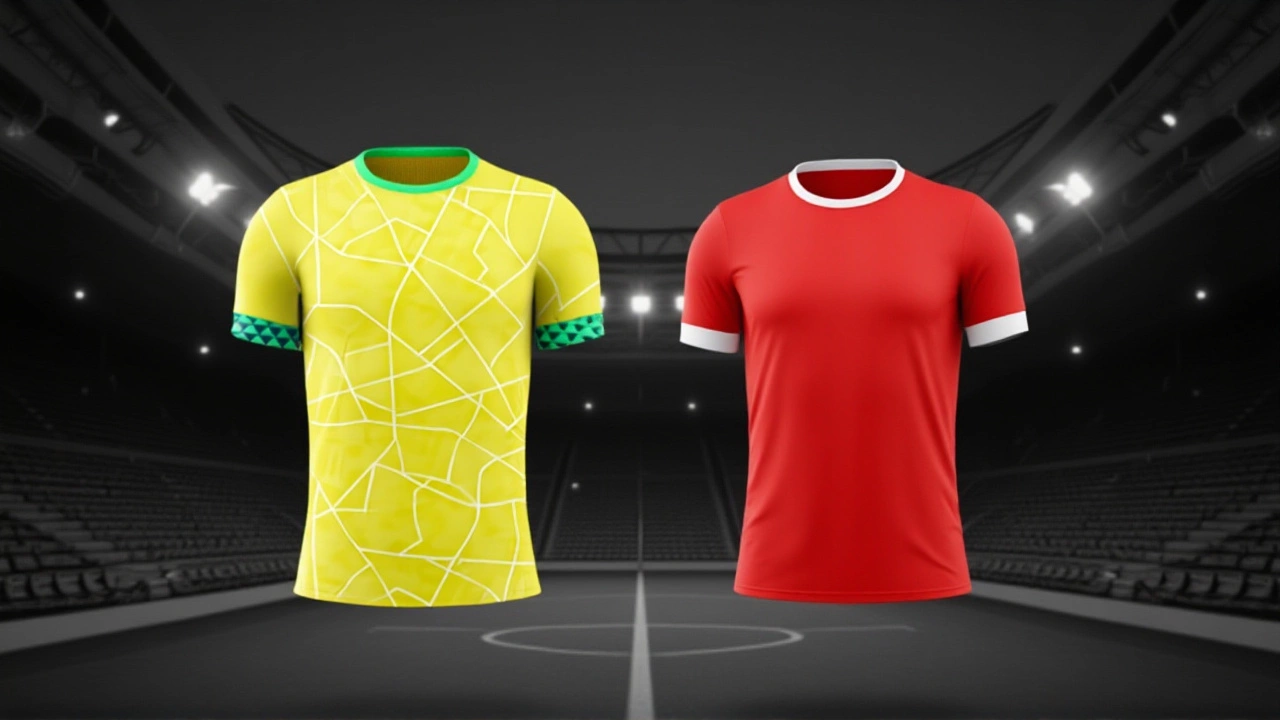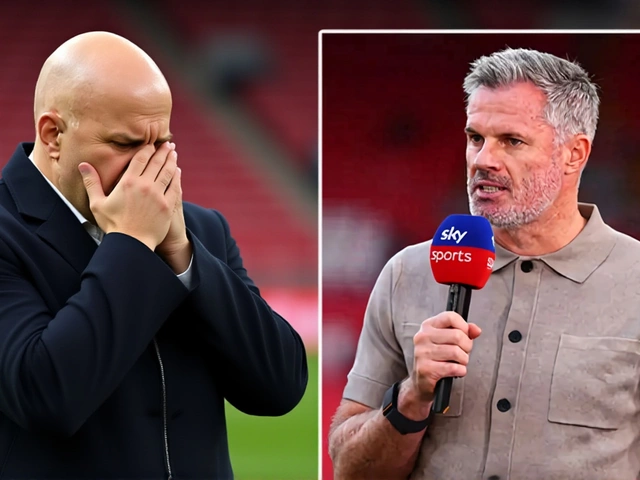
When Brazil and Tunisia stepped onto the pitch at Stade Pierre-Mauroy on November 18, 2025, few expected the underdogs to leave with a point — let alone one that felt like a victory. But that’s exactly what happened. In a 1-1 draw that stunned even seasoned observers, Tunisia’s gritty defense and clinical finishing neutralized Brazil’s star-studded attack, capping off Brazil’s 2025 campaign with a rare blemish on an otherwise dominant year. Nearly 50,000 fans packed the Northern French stadium, many of them Brazilians in yellow, others Tunisians waving red and white scarves, all witnessing a performance that defied expectations.
A Shocking Start, a Familiar Response
It didn’t take long for Tunisia to make their presence felt. In the 23rd minute, Hazem Mastouri pounced on a defensive lapse, slotting home a low drive past goalkeeper Bento (Gabriel Gianelli Bento). The goal wasn’t pretty — no fancy footwork, no solo run — just pure opportunism. Tunisia had barely touched the ball in Brazil’s half, yet there it was: 1-0. The crowd gasped. The commentators on beIN SPORTS USA called it "a classic case of a team capitalizing on silence."
Brazil, meanwhile, looked rattled. Their usual rhythm — the fluid passing, the constant movement — was absent. But they didn’t panic. Instead, they waited. And when the moment came, it came from the penalty spot. In the 44th minute, after a handball by Tunisia’s Ali Alabdi in the box, 18-year-old Estêvão Willian (full name: Estêvão Willian Almeida de Oliveira Gonçalves) stepped up. No hesitation. A calm, low strike to the bottom left corner. 1-1. The stadium erupted. The young forward, wearing jersey number 20, had just announced himself on the global stage.
Second Half: Possession vs. Precision
The second half was a study in contrasts. Brazil dominated possession — 68% by the final whistle — and created more than twice as many shots. Vinícius Júnior danced past defenders like he was in training. Rodrygo twisted and turned in the box. Casemiro (Carlos Henrique Casimiro) patrolled the midfield like a general. But Tunisia’s backline, anchored by veteran Ali Alabdi and goalkeeper Ali Bouziane, held firm. Every pass was intercepted. Every cross was cleared. Every shot was blocked.
"They haven’t had majority of possession," noted the YouTube highlights commentary. "They haven’t had the majority of chances. But what they have done? Score." That line became the match’s defining mantra. Tunisia didn’t need to control the game. They just needed to be ready when it came to them.
The Near-Miss That Could Have Changed Everything
Then, in the 90th minute, Brazil had their best chance. Estêvão Willian, who had been quiet since his goal, received a pass from Fabinho (Fábio Henrique Tavares) on the right flank. He cut inside, drove toward the box, and unleashed a right-footed curler. The ball kissed the left post — a hair’s breadth from going in. The stadium held its breath. The referee’s whistle blew moments later: 90'+5'. Final score: 1-1.
It wasn’t just a missed goal. It was a symbol. Brazil had the talent, the depth, the pedigree. But Tunisia had the discipline, the nerve, the hunger. And in international friendlies — especially those played far from home — that’s often enough.

What This Means for Both Teams
For Brazil, the draw ends a year in which they won nine of their last ten matches. It’s a minor setback, but a telling one. Their reliance on individual brilliance over collective structure was exposed. The emergence of Estêvão Willian is encouraging, but the lack of a consistent second striker remains a concern. With the 2026 World Cup looming, this match was a reality check: even the best teams can be shut down by organization.
For Tunisia, it’s a landmark. They’ve now drawn with Brazil twice in their history — and won once. Their performance here wasn’t just about survival; it was about statement-making. In a year where African teams have struggled to make waves on the global stage, Tunisia showed they can compete with the elite. Their coach, Jalel Kadri, didn’t need to say much after the match. The result spoke for itself.
Context: A Year of Shifts in International Soccer
This match didn’t happen in a vacuum. Just days earlier, the Australia national team (Socceroos) lost 3-0 to Colombia, extending their losing streak to three. The USMNT crushed Uruguay 5-1, signaling a new offensive identity. Meanwhile, Morocco — mentioned in the highlights as having "set that new standard in Tish" — continued to rise as Africa’s most dangerous side. Against that backdrop, Tunisia’s performance wasn’t just a good result. It was a sign of shifting power.

Who Was on the Pitch?
Brazil’s starting XI: Bento (12); Éder Militão (2), Fabrício Bruno (15), Marquinhos (4), Caio Henrique (16), Wesley França (14); Casemiro (5), Fabinho (17), Bruno Guimarães (8), Lucas Paquetá (11); Rodrygo (10), Estêvão Willian (20), Vinícius Júnior (7), Cunha (21).
Tunisia’s starting XI: Ali Bouziane (1); Ali Alabdi (3), Hamza Mathlouthi (5), Youssef Msakni (7), Naim Sliti (14), Mohamed Drager (15), Youssef Hmimsa (16), Nabil Maâloul (8), Hazem Mastouri (10), Mohamed Amine Ben Amor (11), Anis Ben Slimane (9).
The referee was Jérôme Briston of France, a familiar face in international friendlies.
Frequently Asked Questions
How did Estêvão Willian perform in his breakout match?
Estêvão Willian, just 18, delivered a career-defining performance. He scored Brazil’s only goal from the penalty spot and nearly won it with a post-bound shot in stoppage time. His composure under pressure, especially for a teenager in his first senior international start, was remarkable. He completed 87% of his passes and created two key chances, earning praise from analysts as Brazil’s most promising forward prospect since Neymar’s emergence.
Why did Tunisia’s lineup look so different from their World Cup squad?
Tunisia fielded a hybrid squad — mixing experienced players like Hazem Mastouri and Youssef Msakni with younger talents like Anis Ben Slimane. Coach Jalel Kadri used the match to test depth ahead of the 2026 World Cup qualifiers. Several regulars, including Wahbi Khazri, were rested. The result proved Tunisia’s squad depth is stronger than many assume, and their tactical discipline is now consistent across lineups.
What does this result mean for Brazil’s 2026 World Cup chances?
Brazil still enters the 2026 World Cup as favorites, but this match exposed a vulnerability: over-reliance on individual stars. Without a clinical center-forward, they struggle to break down disciplined defenses. Estêvão Willian’s emergence helps, but the team needs a proven finisher alongside Vinícius and Rodrygo. This draw was a wake-up call — not a crisis, but a reminder that talent alone doesn’t win tournaments.
Was this Tunisia’s best result against a top-tier team?
Yes. While Tunisia beat Spain 2-1 in 2005 and drew with Portugal in 2018, this was their most convincing performance against Brazil — a team with a global reputation for attacking flair. They didn’t just survive; they threatened on the counter, held their shape under pressure, and scored first. Analysts now rank it alongside their 2004 Africa Cup of Nations win as a defining moment in their football history.
Why was this match played in Lille, France?
Lille was chosen as a neutral venue with strong diaspora support — over 150,000 Tunisians and 80,000 Brazilians live in France. The French Football Federation facilitated the match as part of its efforts to promote international friendlies in secondary cities. Stade Pierre-Mauroy, home to Lille OSC, has hosted multiple high-profile friendlies since 2012, including Brazil vs. France in 2019.
What’s next for both teams after this draw?
Brazil begins its 2026 World Cup qualifiers in March 2026 against Venezuela, while Tunisia enters the final round of African qualifiers in June 2026 against Senegal. Both teams will use this match as a blueprint: Brazil to improve structure, Tunisia to build confidence. The draw may be forgotten by the time the World Cup starts — but for now, it’s a milestone for African football.


